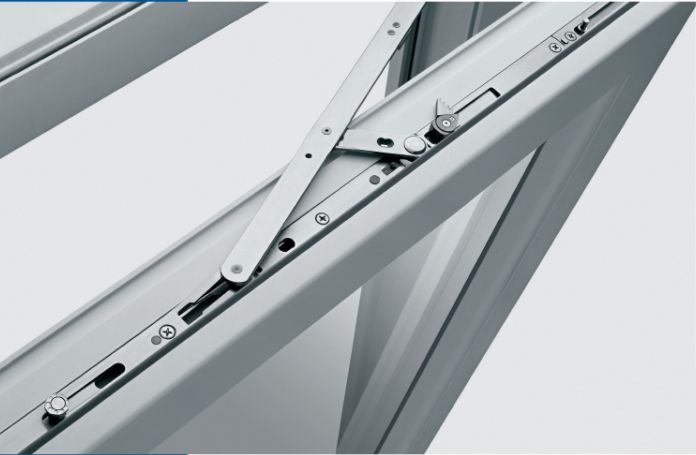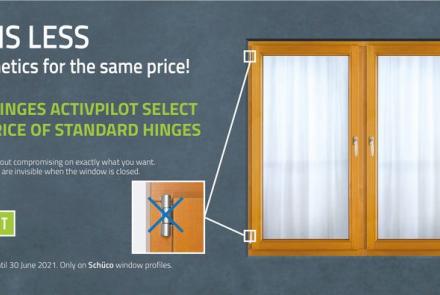Fittings which make a heart of the window
Colour of the frame, its shape, and type of glazing are not the only important issues that we have influence on while selecting windows. A lock, a hinge or a handle are elements of window fittings which affect the comfort and functionality of a window. Windows having the best parameters may disappoint us if the fittings fail. Therefore, when making a decision to invest in windows, it is worth taking some time to explore fittings' issues.
What are the fittings?
The term "window fittings" refers to almost all mechanical parts of the structure that open, close, and tilt window or door sashes. Fittings also have a security function, as these protect householders from burglary. The fittings system, which controls the window, can be divided into two equally crucial parts. Fittings installed on the sash's frame, e.g. casement bolt (controlled by the handle movements), or friction hinge (enabling change of the sash's position from tilted to turned) and those installed on the frame, e.g. hinges (which support sash's weight). Windows with no fittings are so-called "fix", that is a glazed frame.
Correct selection and installation of fittings has a key impact on the operating properties such as:
- Water tightness
- Air permeability
- Resistance to wind load
- Mechanical strength
- Burglary resistance
Today, Tilt, Turn, Tilt&Turn, Tilt-in, Slide, or Tilt&Slide solutions are available. Selected method of opening should be suitable for a room type and frequency of window use.
Common types of window fittings
Envelope fittings
Nowadays, the most frequently used fittings are of the circumferential type, i.e. fittings which are placed on the entire perimeter of the sash. In its basic option, the sash is equipped with a casement bolt and a friction hinge controlled by a handle. Hinges and catches are attached to the frame. Once closed, they press the sash against the frame evenly, ensuring tightness and preventing against profile deformation. They are recommended to be used in windows and balcony doors that weigh up to 150 kg.
The way our windows will open depends on the type of envelope fittings we choose. We can select between tilt windows, which will allow you to open the window on the reveal, and turn windows, which only allow you to lean the sash. However, the most convenient solution includes fittings that combine both functions, i.e. Tilt&Turn.
PSK system
A type of envelope fittings dedicated for large glazing, e.g. terrace doors, are those that make part of PSK systems. These enable the sash to be tilted and then moved along the rail which is located in the guide at the bottom of the frame.
HST system
In case of very large and heavy glazing, it is necessary to provide efficient mechanisms which enable shifting heavy sashes that weigh several hundred kilograms. This is a task for HST systems, in which the movable sash is shifted behind a fixed sash. Opening does not require application of force as the sash moves smoothly on the rollers of the rail hidden in the floor. The rollers and massive handle, hook casement bolt and top guides are the most important elements of this type of fitting.
Optional window fittings elements
When selecting fittings, it is worth to consider whether to equip them with additional elements that positively affect safety, comfort and functionality. Here is a list of the most important additional functions of the fittings.
Standard micro ventilation
Micro ventilation, also known as micro-slots, is a standard in Tilt&Turn sashes. Once the handle is turned, a small gap is formed between the frame and the sash; it ensures a continuous supply of fresh air.
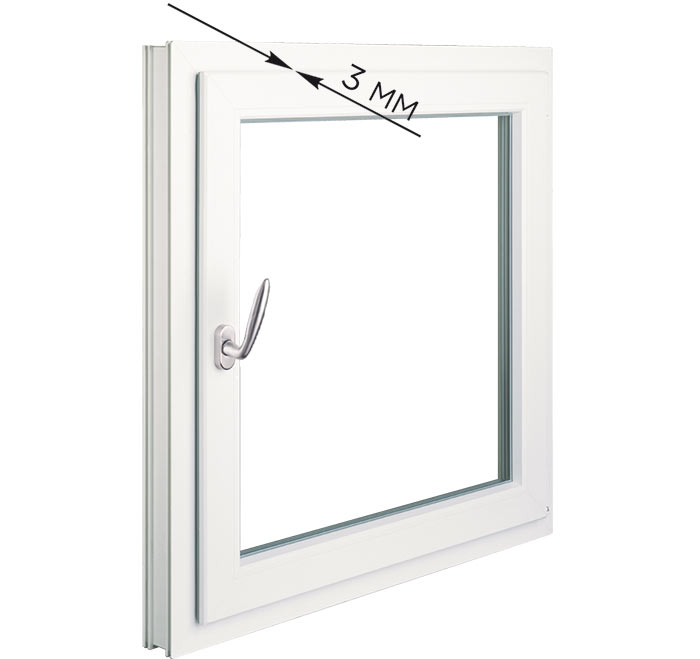
NEW! Modern ventilation with activePilot Comfort PAD fitting.
Windows with the activPilot Comfort fitting feature an additional function including parallel sash pitching from the frame (apart from the standard tilt and turn function). In this position, approx. 6 mm gap is formed between the sash and the frame on the entire circumference of the window. Compared to micro ventilation (approx. 3 mm and only in the upper part of the window), ventilation becomes more effective. You may ventilate the house during your holiday, as the window remains closed.
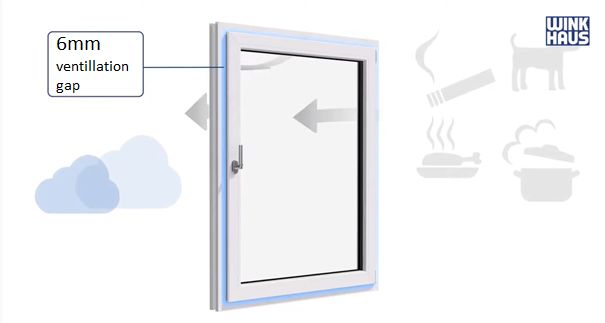
Concealed hinges
oncealed hinges are fittings that cannot be seen as the hinges are hidden between the sash and the frame. As a result, the windows gain in aesthetics; only the frame of the sash is visible, without unnecessary metal additions.
Aesthetic values is not the one and only advantage. The windows are easier to be kept clean, the surface of the woodwork is smooth, there are no corners in which dirt could be accumulated. Concealed hinges also increase energy efficiency and soundproofing of the windows (the seal is not broken in any place) also.
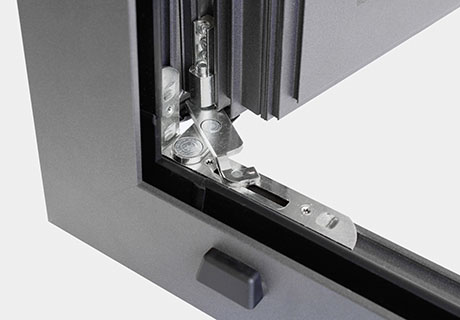
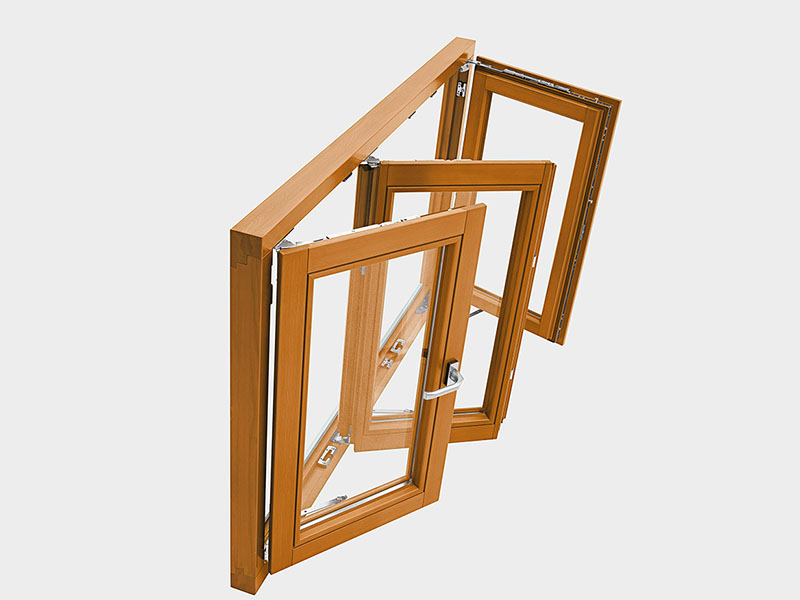
Lock of incorrect handle position
The lock of incorrect handle position with integrated sash lifter is a mechanism which forces operations of the window. When the window sash is opened, the window handle cannot be moved to the tilt position. The sash lift guarantees smooth transition from open to closed position.
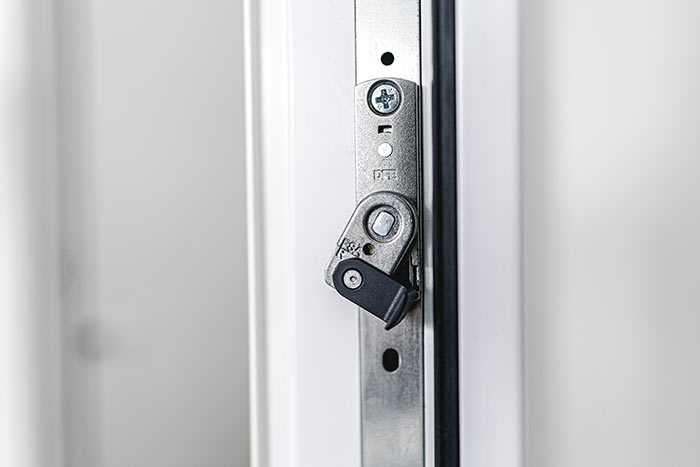
Stepwise tilt of the sash
It is a mechanism that allows you to adjust the tilt of the sash by turning the handle to the next step. Depending on the fitting system we can obtain up to 7 various positions. The tilted sash is additionally protected against slamming. This system seems to be useful particularly in the kitchen, bathroom, or bedroom.
Sash opening limiter
This device protects the sash from hitting the window recess e.g. in case of strong wind. The built-in brake keeps the sash in a fixed position.
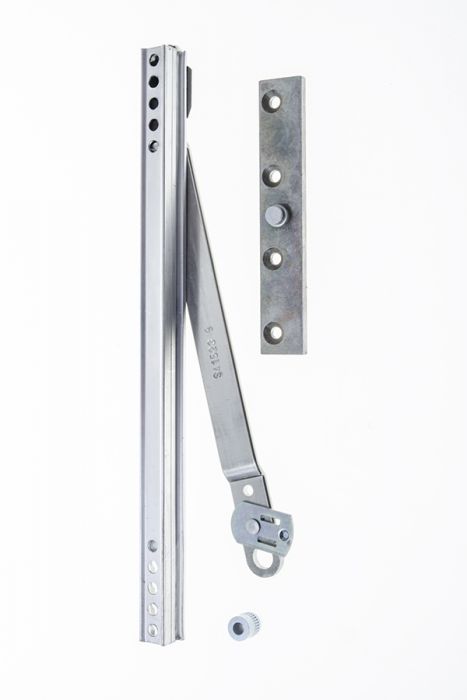
Balcony door latch with handle
It allows for closing balcony doors from the outside with a special handle. In order to reopen the door it is only necessary to push the sash slightly. It is a great solution for those who often use a terrace or a balcony.
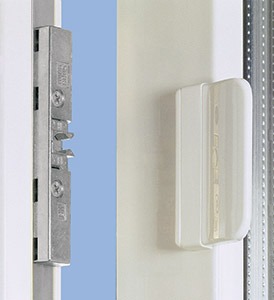
Window lock
The key lock blocks opening of the window by unauthorized persons. It is a brilliant solution when there are small children in the house.
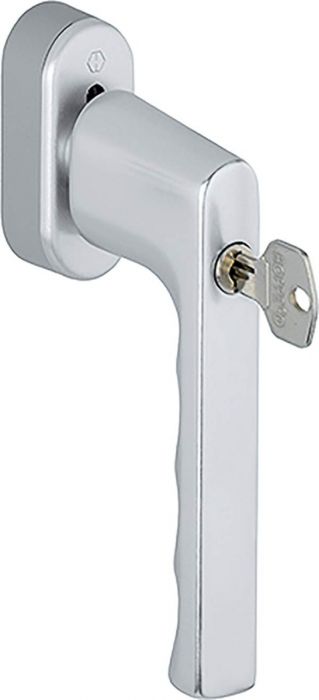
Octagonal locking head
This is distinctive solution for ActivPilot fittings manufactured by Winkhaus. The system is based on a single-locking element - an octagonal "head". The shape of the octagonal locking "head" guarantees a steady connection with a steel anti-burglary catch in the window frame. The system has undergone a number of tests carried out by the Winkhaus laboratory and other independent research institutions. Both endurance tests and burglary resistance tests confirmed suitability of the fitting for use in various profile systems and windows of different sizes.
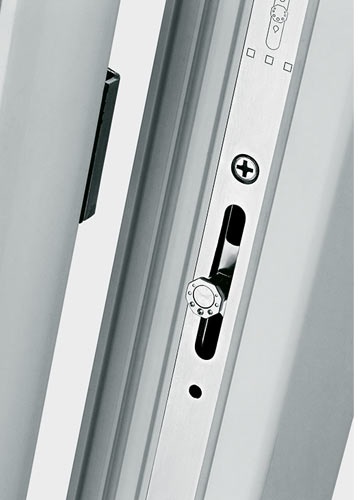
Self-closing device for sliding doors
Self-closing devices, also known as slow-down or brake systems for sliding doors, improve the comfort of use. Their purpose is to prevent sudden impacts and slightly close the door.
Automatic systems
Automatic systems Windows opened and closed automatically - since now it is possible. Such fittings are offered, among others, by Winkaus company. The system can be programmed so that windows open and close automatically even during our absence. The system also allows for safe ventilation of rooms during the absence of its residents. Depending on how it is programmed, the window will close automatically after 10, 20 or 30 minutes. We can also set automatic airing - e.g. once an hour for 10 minutes.
Fitting with non-standard handle
It is worth to know that manufacturers also provide an option to place the handle in the lower part of the sash. Such a solution is perfect for staircases, cellars, garages, bathrooms, in which the window is placed so high that opening it would be difficult. A special fitting with a non-typical location of the handle will make its opening much easier.
Fittings vs safety of residents
Balcony windows, terrace windows and large windows on ground-floor level are statistically the weakest link when it comes to the security of our homes. It is these "entrances" that burglars most often choose. How to ensure a peaceful sleep for the residents and secure their property? By choosing anti-burglary fittings.
Window resistance classes.
Windows with no resistance classes (standard)
As part of standard fittings ther is one anti-burglary clip mounted to the lower part of the frame. In case of windows installed above 1 floor or roof windows, standard fittings or basic protection will be sufficient.
RC1 resistance class windows
RC1 class burglary resistance windows are equipped with a fitting containing 4 security points (one at each corner of the window), an approved handle with a key and an anti-drilling cover for its fitting system. This solution will protect the windows against burglary with physical force.
RC2 class and above
RC2 class windows are equipped with a special anti-burglary glass (P4A), a fitting in which all locks make safety points, an approved handle with a key and an anti-drilling cover for its fitting system. These elements provide superior level of security, which will protect the window against burglary with use of tools.
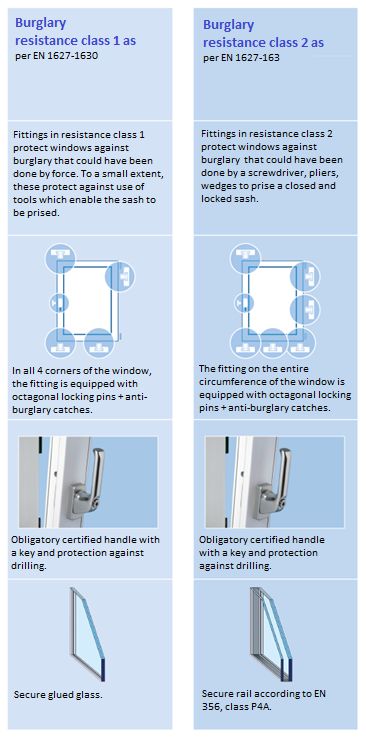
Window fittings - proper maintenance
Window fittings - proper maintenance Not everyone is aware that window fittings require maintenance throughout their lifetime. Dust and dirt get into their tiny gaps and sometimes small insects settle there. Moisture still occurs. All these factors have a negative impact on the condition of the fittings. That is why maintenance is necessarily to be carried out once a year, and twice a year in winter and summer times. Regular fittings servicing is the basis for efficient opening and closing for many years.

 Polski
Polski English
English Germany
Germany France
France
